What Japanese Saws To Buy
Here we explain everything you need to know about Japanese saws and what ones to buy. From the different types to what sets them apart from western saws.
A Draw-stroke Cutting Action...
The most distinct feature of Japanese saws is that the teeth point towards the handle. When in use, the cutting action is on the draw-stroke. The saw cuts as the user pulls, totally opposite to a traditional western saw. It is doubtful there was ever a decision made as to which way the saw should work. It may well be that it evolved naturally through the working practices of the Japanese carpenter.
A favourite theory is that many were journeyman carpenters, needing to travel as lightly as possible. As a bench would be too heavy to carry, working on the floor became the norm. In this position, it is impossible to put any force into sawing on the push stroke. Pulling however is entirely the opposite and tremendously efficient. After years of evolution, we can see the fruits of this working practice. This is only one theory however, there are many more.
When a Japanese Saw is Working
When a Japanese saw is working, the blade is in tension rather than compression as is the case with a Western saw. In consequence, the blade of a Japanese saw can be far thinner and be of much harder steel. A Western saw is after all a compromise; it needs to be thicker and tempered in order to resist the pushing force when cutting. This makes it heavier and it will require much more frequent sharpening because the steel is softer. The Japanese saw is therefore naturally a great deal lighter in weight and will stay sharp much longer.
The harder steel allowed the geometry of the saw teeth to evolve differently. This is most noticeable on the crosscut saws where the teeth are long and fine. Closer inspection reveals not one but up to three cutting edges on each tooth. The teeth literally slice through the wood like a series of super sharp knives leaving the smoothest of cut surfaces, almost planed, rather than sawn.
Rip cutting teeth look very similar to Western teeth, the triangular chisel type. Even so, on the better quality Japanese saws the teeth are smaller nearer the handle allowing for a series of short strokes to start the cut, before bringing the full length of the saw to bear on the workpiece. Being so thin, means removing far less material from the actual cut, on average the kerf is at most only a third of a similar Western saw. This means, the worker only expends a third of the energy to achieve the same result and will finish the job much quicker.
View our full range of Japanese saws here
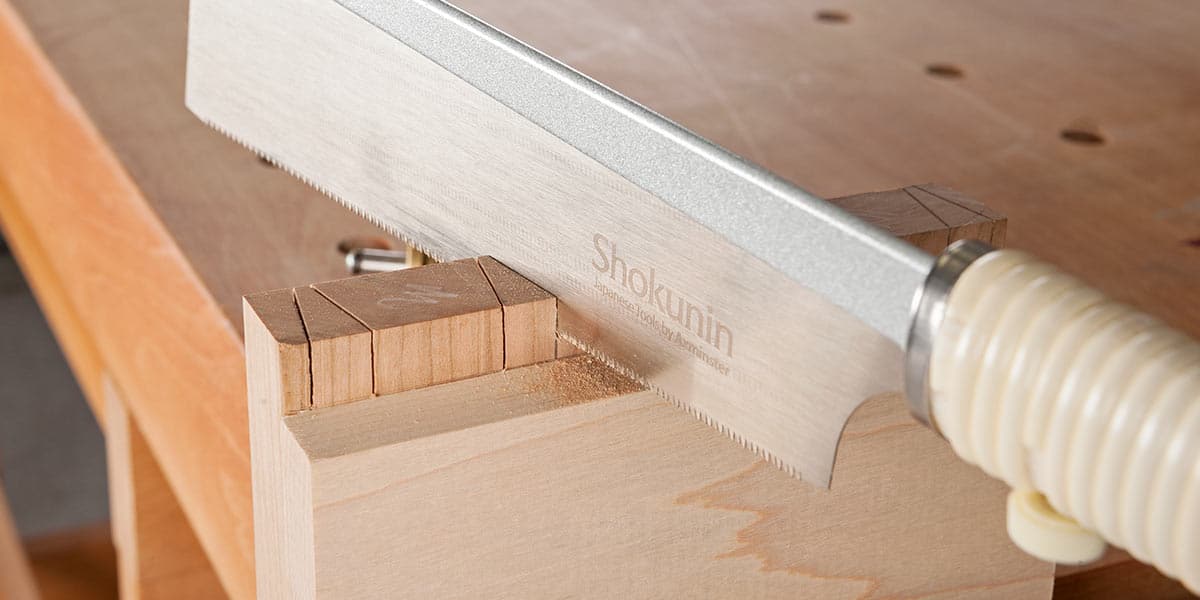
Types of Japanese Saw
Japanese saws or Nokogiri fall into three basic styles. The single edged backless saws referred to as a Kataba, the double-edged or Ryoba and the single edged with a stiffening back or spine known as a Dozuki. There are slight variations within each category for more specialist functions.
Kataba Saws
The Kataba saws, having no backs are ideal for deeper cuts. These are the equivalents of western rip and panel saws. Examples in the Axminster catalogue are the Hassunme rip and crosscut saws, both of which feature replaceable blades. They remain sharp for a considerable amount of time, but once dull it is simplicity itself to change the blade.
The handles of both saws have identical fittings so it is possible to purchase one saw and a replacement blade of the other type, just change from one to the other as and when required. A further benefit; removing the handle means the saw will fit neatly into a toolbox.
View the Kataba saw here
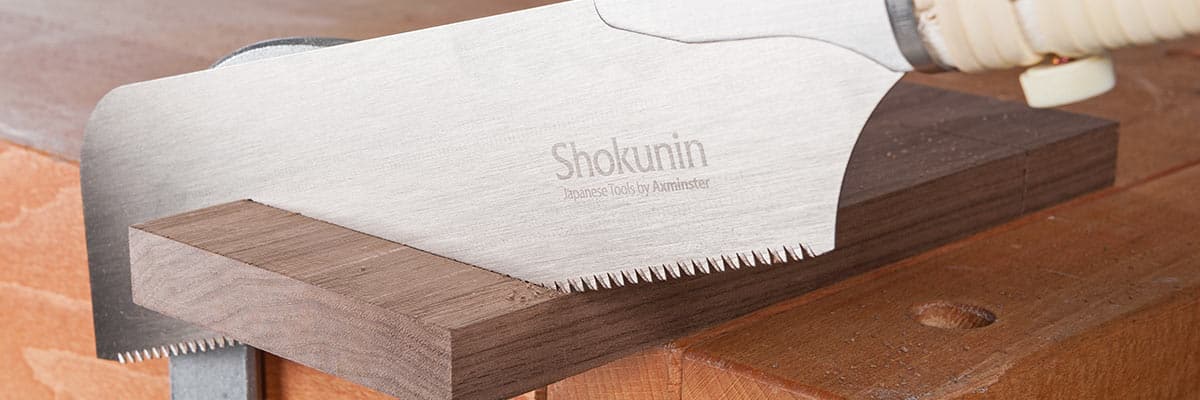
Kugihiki Flushcut Saws
The Kugihiki or flush cutting saw has an exceptionally thin and flexible blade. The teeth have no set; it is perfect for cutting the protruding ends of through tenons or dowels without damage to the surrounding area. When using this saw, it helps if you gently rest the fingers of your free hand on the back of the blade just behind the cut. This gives much greater control. View the Flushcut saw here
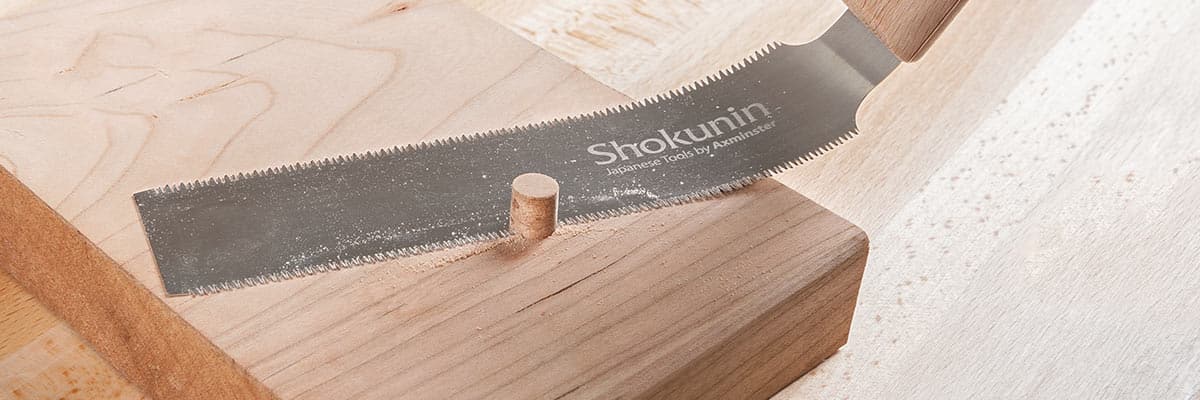
Ryoba Saws
The most visually striking of all Japanese saws is the double-edged Ryoba style. Surprisingly, it is a recent addition to the Japanese woodworker's toolbox, originating just over 100 years ago or so. In reality, it is a crosscut and a rip cut Kataba back to back on a single handle. Instead of carrying two saws the woodworker only requires one dual purpose saw, a little less weight to carry around and a good deal lighter on the pocket.
The Ryoba must be the ultimate tenon saw, one edge for ripping down the cheeks and the other to cleanly crosscut the shoulders. The Ryoba saw from Axminster features a replaceable blade. These saws are for the professional woodworker and are not to be confused with cheaper alternatives. The maker scrapes the blades so they are thinner in the centre in order to prevent them binding in a deep cut. Careful checks on each blade ensure its flatness before it leaves his factory. The quality is comparable with the best Western saws.
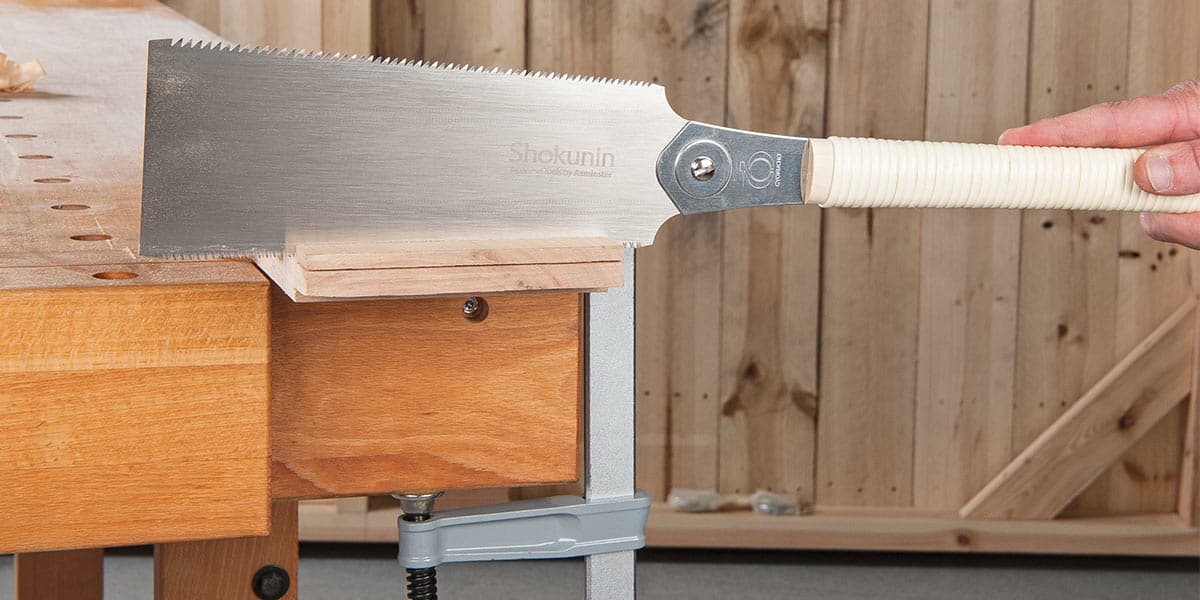
Dozuki Saws
Within the Dozuki saws is the Dozuki-Me. This has a blade thickness of a mere 0.3mm. Such a thin blade needs a steel spine to give it rigidity. In a similar way to a western tenon saw, the weight of the back provides the necessary downward pressure to ensure a smooth cutting action. This saw also features a replaceable blade (because at 25 tpi it is not an economical proposition to sharpen even if a file were obtainable). For deeper cuts, a wider blade is available.
Also in this group is what has proved to be a hugely popular saw, the Ikedame. Its name refers not so much to the saw but rather to the particular pattern of the teeth. Specifically designed for cutting small intricate joints down the grain, the dovetail comes immediately to mind. This is where the Ikedame has found endless friends. Another Dozuki is the Ice Bear brand Kumagoro saw, with very fine teeth at 25 tpi. With a 190mm long blade, it falls between the two previous saws and will prove a useful tool for cutting all manner of fine joints.
To get the most from a Japanese saw the main thing, is to relax and let the saw do all the work. The only thing for the woodworker to do is to provide the backward and forwards motion. Either pushing or trying to force the saw to cut can result in one of two things, the blade will buckle or a tooth may snap off. Don't worry if the odd tooth gets broken, which can happen in very hard woods, this will not affect the saw's performance. It matters not whether you hold the handle near the blade or at the far end, whichever feels most comfortable is correct, a good quality Japanese saw will stay on line. View the Dozuki-Me Tenon saw here
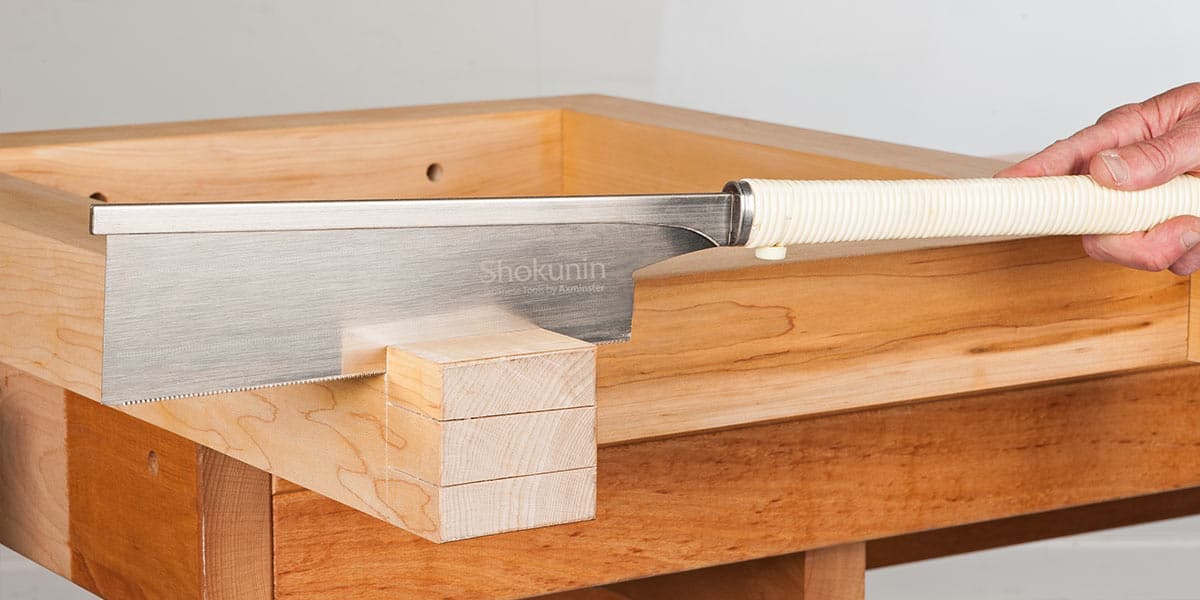
Conclusion
To sum up, compared to its Western counterpart the Japanese saw is lighter in weight and thinner, therefore, requiring far less effort on the user's part. The unique tooth form results in much faster cutting. It is harder so stays sharp for a very long time and being so sharp results in cleaner, more accurate cuts.



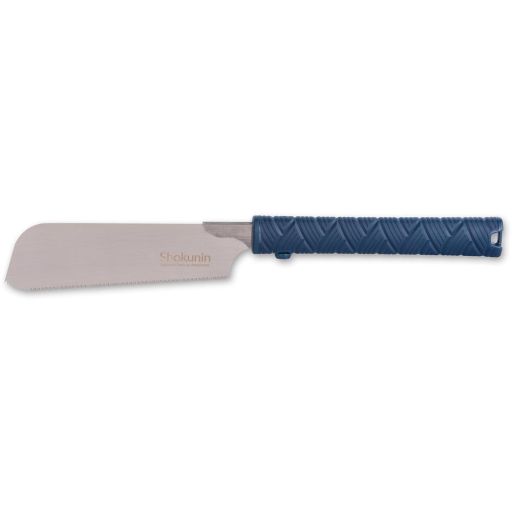
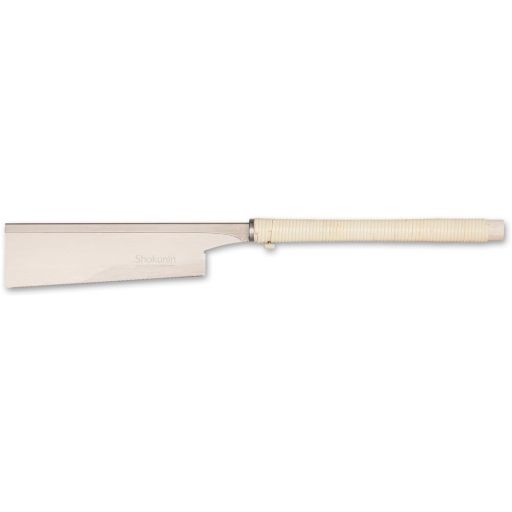
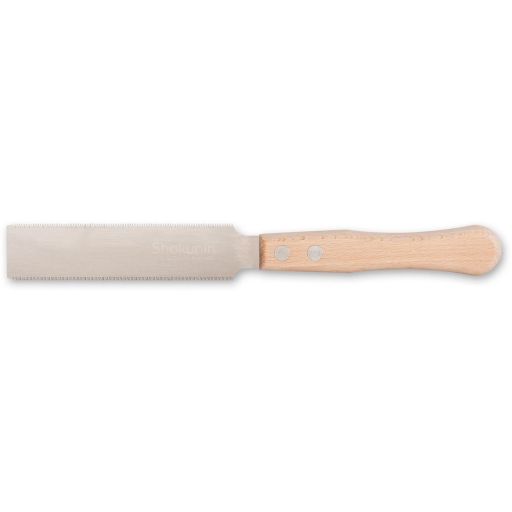
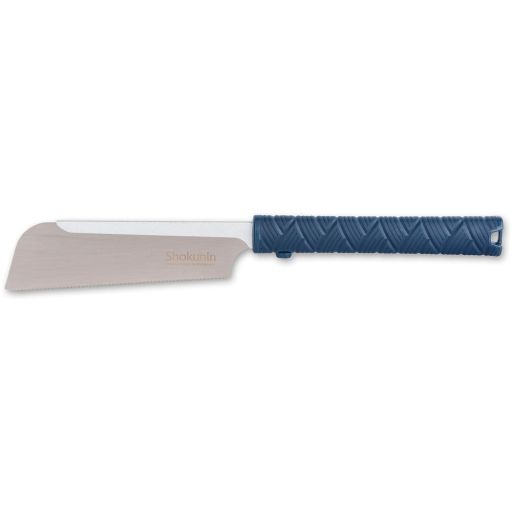
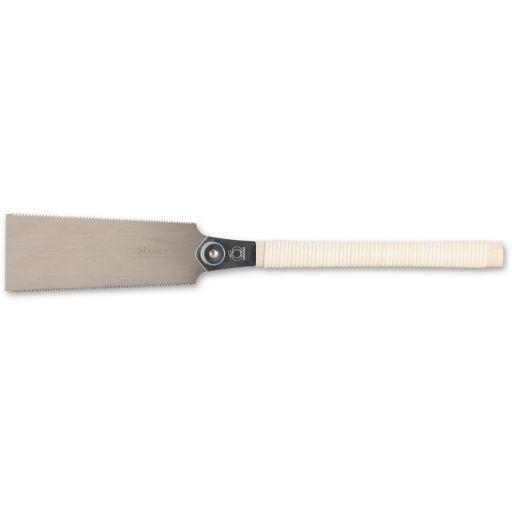
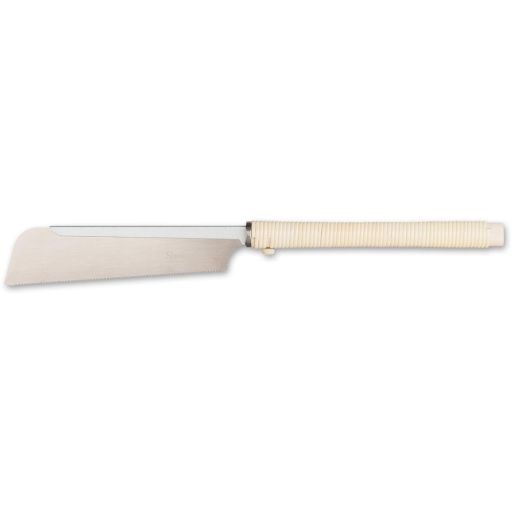
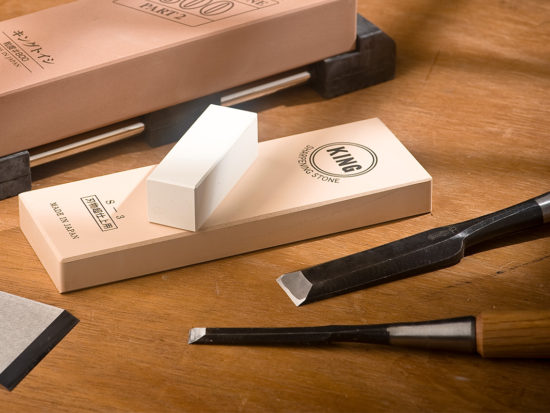
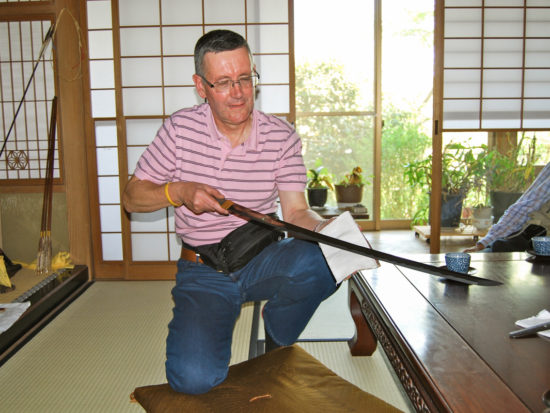
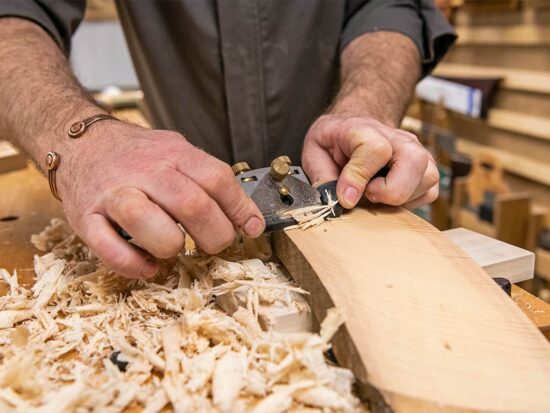
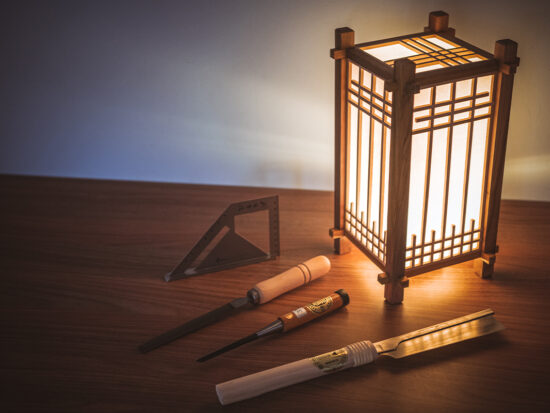
I've used both western and Japanese saws a lot, Japanese were the first I used mush and for the longest, while it is true they're thin and cut fast, I think they're very inaccurate compared to good dovetail and tenon saws, the reason for this in my opinion is partly that with a push cut tenon saw you are guiding the teeth into the wood and where as on the pull cut the teeth are entering out of sight on the back side where it's very thin blade is liable to get pulled off corse by knots, grain etc, and partly the pistol grip handles of dovetail and tenon saws allow you to make very accurate vertical cuts with out even using markings you can feel the level when you get used to them, I don't find that the case with the long thin handles of Japanese saws, also in general Japanese saws are too difficult to resharpen so they're semi disposable, complete contrast to the very easy to resharpen western saws. good dovetail and tenon saws should last a lifetime (and they don't have to be expensive the veritas saws are excellent), dozukis won't last long, well the blades won't anyway. they do cut fast though, Japanese pruning saws like silky saws are excellent would never use a push saw for their job it'd be hopeless.
An interesting point of view and like you, I've used both Western and Japanese saws. Over four decades, I've used many different types of Western saws and although there's nothing intrinsically wrong with these tools (when you consider the furniture masterpiece that were made and are still be made with them,) I prefer the Japanese saws. Western saws have to be pushed through the timber using the whole hand, whereas a decent, sharp Japanese saw can be pulled through the material with just the finger and thumb gripping the handle. Japanese saws were also never meant to be used at the bench but are intended to be used by the craftsman seated or kneeling on the floor. Most Japanese saws sold in the UK do, as you say, have replaceable blades but if you ever have the chance to try a saw from an artisan maker as I've done, it's a complete revelation. The finished cut, straight from the saw looks like it's been smoothed with a plane! As ever it's 'horses for courses' and what suits one person, won't suit the next. At the end of the day we all need to find a way of working with the tools that suits us as individuals.
I'm sure the handmade Japanese saws are amazing as you say (same goes for lie Nielsen etc western saws) and I agree absolutely that they cut very fast and with less effort, but for me atleast i find that it's much easier to get perfectly straight cuts with no bowing or drifting where the blade has followed grain etc from a western style saw so I will happily sacrifice speed of cut for straightness of cut, but that's just me, the saws I'm using at the moment are veritas they're reshape able very easily and cost about the same as a single blade for some despots able type Japanese saws. I'm sure it's all preference and I bet there are shops in japan marketing Western saws and talking about the advantages in the same way, they do here with Japanese saws. excellent results can be made with both!
I toured Japan some years ago and strangely, there's no evidence of any Western tools (at least that I could see) though there is, as you'd expect, a vast array Japanese tools, including saws. I have heard it mentioned that the Japanese find it strange that Westerners push their tools through the wood rather than pull them...this of course refers not only to saws, but planes (kana) as well. I have also tried Japanese planes which are interesting but they are held and used in a totally different way. The blades have to be set with a hammer which is very tricky and a definite learning curve; one that I didn't master easily!
possibly in the realm of the online retailer as Japanese saws were mail order here until fairly recently (last 20 years?), I don't know just a hunch, I can't imagine that dovetail saws etc don't exist in japan, someone always wants to be different! I know the blades veritas use come from japan, made specifically for veritas saws though, and I think the veritas design has a Japanese feel to it. I guess you can order direct from the country of origin now though, I do that from time to time with unusual item that can be externally priced here Japanese fountain pens are an example.
As for the planes the hammer setting would be the same as older wooden type western block planes etc, I love the method of adjustment of western metal planes, the ease of backing out the blade especially compared to wooden planes, and again I think there is probably an accuracy advantage and a speed and effort penalty to them. I know some people love the old wooden or infill planes due to less effort required to use them. it's all preferences again. but I've never used a Japanese plane, so I can't really comment.
I have used a Dozuki saw for probably twenty years now as my go-to saw for cross-cutting and trimming. It is very fast and as accurate as the user's skill permits. It can cut millimetre slices in any wood and is usually faster and easier than setting up a power tool for one-off cuts.
I have lost teeth from blades occasionally through carelessness but the disposable aspect is no different to a stanley knife and means that a sharp blade can always be kept to hand. In any case, whilst saw-sharpening is no doubt a useful skill to acquire, most of us don't have the time or patience.
I am not so keen on the backless ripsaws but then ripping is a different thing entirely and why wouldn't I use a guide rail plunge saw for this?? Bought one of these recently and now completely converted!
I have owned a couple of the Japanese pull saws which I bought from reputable tool retailers; I still have one on my saw rack. However in both cases within no more than half a dozen strokes a number of the teeth simply broke off. No I was not sawing metal. The first time it would have been something like a piece of 15 mm oak, and the second time, having had my first experience, it was a piece of softwood. I've mentioned this at a couple of trade shows to people selling them and been met with a blank expression and no explanation. So at an average of about £3 per stroke I have preferred to stay with my 50 year old Tyzak tenon and dovetail saws.
An interesting observation which I've also encountered and I can't really offer an explanation either, except to say that it may be the tooth shape. The teeth on different saws look very similar, but there are minute variations in their shape and rake angles that affect the way they cut. That said, my current saws have proved to be excellent (very similar to Sun Child) and will happily cut both soft and hard woods, including ebony. I've also found from experience that a very light touch is required with a Japanese saw, whereas a Western saw can be treated a little more robustly. I've been using Japanese saws for around a decade now and have only come across the 'broken tooth syndrome' once or twice, so it may be worth persevering, but from your experience Ken, it's probably worth your while sticking to your old and trusted Tyzack...and they're good saws, because I used one for many years!
It's to do with technique. The pull action has a different feel to it and requires a lighter touch. Once you get the hang of it, accuracy is not a problem. Look at the woodwork in Japan!
I have used Western saws all my life until about 6 months ago. Now I no longer carry a Western saw in my van. Japanese saws (when used gently and gracefully) are a total revelation.